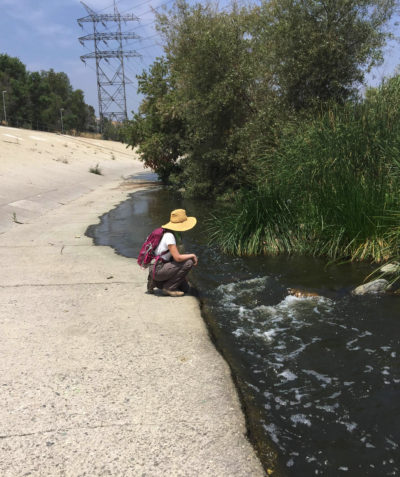How to Restore an Urban River? L.A. Looks to Find Out
Published on by Robert Brears, Founder of Our Future Water, Young Water Leaders, Mitidaption & Author (Springer Nature, Wiley) in Government
Officials are moving ahead with a major revitalization of the Los Angeles River — removing miles of concrete along its banks and re-greening areas now covered with pavement. But the project raises an intriguing question: Just how much of an urban river can be returned to nature?
In its natural state, before it was channeled and lined with concrete, the 51-mile-long Los Angeles River was often little more than a trickle for nine months of the year. During the rainy season, however, the small, braided stream would turn into a powerful, churning river.
“It was a big, flashy, dynamic river system,” says Sophie Parker, a biologist with the Nature Conservancy.
But such flash flooding wouldn’t do for a booming city, so in 1938, after a devastating torrent, a project to tame the Los Angeles River with a concrete straitjacket got underway. Since then, nearly the entire river has been funneled through a hard channel that allows no flooding. The city turned its back on the ditch, and public access to it was prohibited.
Nature Conservancy biologist Sophie Parker in the the Glendale Narrows section of the Los Angeles River. JIM ROBBINS/YALE E360
Over the past several decades, conservation organizations and neighborhood groups in the United States’ second-largest city have worked to recreate some semblance of nature along the waterway. Collaborating with city officials, these organizations have restored some small creeks and planted native trees and shrubs in new parks. But the work has been done piecemeal.
Now, however, the U.S. Army Corps of Engineers, partnering with the City of Los Angeles and conservation groups, is poised to launch the largest coordinated restoration effort of the Los Angeles River to date. The Corps recently completed a plan to remove three miles of river-killing concrete and enhance an 11-mile run through the Elysian Valley, a stretch called the Glendale Narrows. The Corps has asked Congress for $380 million to carry out the restoration effort, which will be combined with roughly $1 billion from the city.
 This will not be the original L.A. River — trying to restore some semblance of naturalness to such a waterway faces major limitations.
This will not be the original L.A. River — trying to restore some semblance of naturalness to such a waterway faces major limitations.
The river is no longer connected to groundwater and can’t be until toxic waste from a number of U.S. Defense Department facilities in the region — including the Santa Susana Field Station, a former rocket engine test center — are cleaned up.
And the many places a living Los Angeles River would go, flooding and changing course, are now filled with roads, houses, and commercial buildings.
“We’re not going to be able to buy up or relocate people,” says Jill Sourial, the Nature Conservancy’s urban conservation director in Los Angeles.
But restoring a river that is dynamic and free-flowing remains a far-off, even impossible, dream for many urban areas. Rivers often flood, and while that may be hard on people and the things they build, it’s great for biodiversity. During a flood, mineralized nutrients and organic material are suspended in the river and groundwater, nourishing an array of biodiversity. And flooding continually creates a patchwork of diverse habitats, also promoting species diversity.
 Questions about what the Los Angeles River could become may find answers in the Glendale Narrows, where some elements of naturalness will be reintroduced.
Questions about what the Los Angeles River could become may find answers in the Glendale Narrows, where some elements of naturalness will be reintroduced.
“It’s a new ecosystem type,” says Parker. “That’s why we don’t call it restoration. We call it habitat enhancement.”
The Corps plan would recreate 719 acres of wetlands, remove three miles of concrete to create new riparian habitat, and re-establish a confluence with a stream called Verdugo Wash.
Still, nature finds a way. It turns out that water sheeting over the concrete grows algae that are an important foraging habitat for shorebirds. Indeed, on the day I visited, a black-necked stilt was working these hard bottom shallows.
Historical ecology — the study of old photos, maps, and diary accounts — will provide a sense of what the river once looked like, including the wildlife and plant species present. This will help guide restoration. “It gives you a sense of options for the future,” Parker says.
Even a partially restored river will provide an escape from L.A.’s overwhelming urbanism.
“There’s something magical about coming to a place and seeing so many varieties of life,” says Parker. “The river provides that.”
Read more at: Yale Environment 360
Media
Taxonomy
- Water Quality
- Integrated Urban Water Management
- Environment
- Restoration
- Aquatic Environment
- River Restoration
- Environmental
